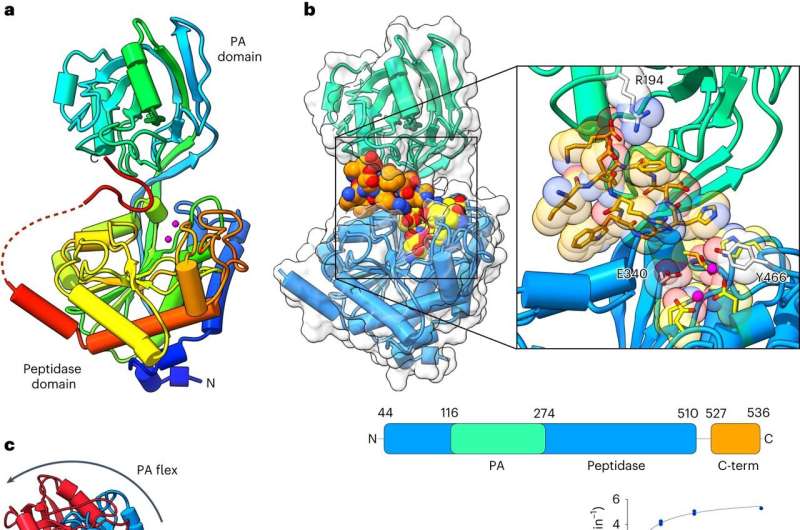This article has been reviewed according to Science X's editorial process and policies. Editors have highlighted the following attributes while ensuring the content's credibility:
fact-checked
peer-reviewed publication
trusted source
proofread
Team develops peptides to combat bacterial biofilms

Researchers from the University of St Andrews have developed peptides that can help combat bacteria growing in biofilms, which occur in up to 80% of human infections.
Treating infections becomes significantly more challenging when biofilms are present, as they not only reduce the effectiveness of antibiotics but also give rise to several medical complications. These complications include infections following joint replacements, prosthetic devices, as well as contamination in catheters and other medical equipment. The lack of specific treatments makes the management and treatment of biofilms exceptionally difficult.
Published in Nature Chemical Biology on Thursday, June 29, the team of researchers, led by Dr. Clarissa Melo Czekster and Dr. Christopher Harding from the School of Biology at St Andrews, in collaboration with researchers at University of Dundee, developed antimicrobial peptides that can target the harmful bacteria growing in biofilms.
The team determined how a key enzyme (PaAP) in biofilms work and developed a revolutionary new strategy to inhibit the protein. Their inhibitor is potent and targets cells from the human pathogen Pseudomonas aeruginosa in biofilms. Pseudomonas aeruginosa is one of the top pathogens of concern by the World Health Organization, causing chronic infections in patients with cystic fibrosis and other conditions, which means a biofilm inhibitor is urgently needed.
Dr. Czekster and the team are currently working in collaboration with the University of St Andrews Technology Transfer Center and industry partner Locate Bio, a biomedicine spinout of the University of Nottingham, to commercialize the technology. The Locate Bio team are trialing the peptides to see how they work with the company's Programmed Drug Release technology to develop new orthobiologic solutions and products. The Technology Transfer Center has filed a U.K. priority patent application.
Dr. Czekster said, "Our research reveals how designed inhibitors can target a key enzyme in bacterial virulence, offering molecular insights applicable to aminopeptidases in diverse organisms.
"This remarkable new research presents an innovative strategy to target bacterial biofilms and pave the way for better treatment of bacterial infection."
More information: Christopher John Harding et al, An anti-biofilm cyclic peptide targets a secreted aminopeptidase from P. aeruginosa, Nature Chemical Biology (2023). DOI: 10.1038/s41589-023-01373-8
Journal information: Nature Chemical Biology
Provided by University of St Andrews





















